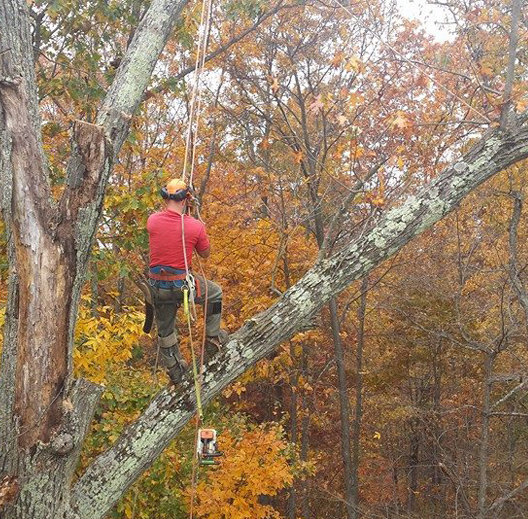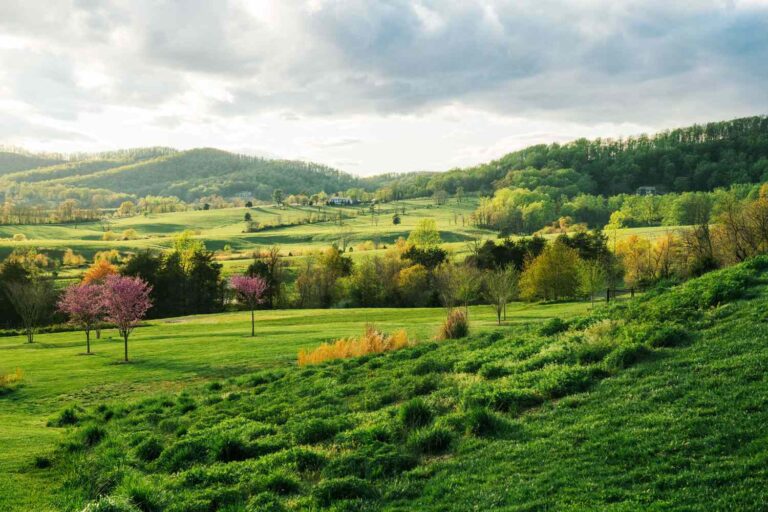Topping trees, also known as heading, is a common tree pruning practice where large branches are removed from the top of a tree. While it may seem like a simple solution to reducing the height of a tree or controlling its growth, topping can actually have serious negative consequences for the tree and the surrounding environment.
That’s why at Cox Tree Service, we usually recommend alternative pruning techniques that preserve the natural structure and health of your trees.

Request a free estimate
Fill out our contact form and let us know how we can help.
One of the biggest disadvantages of topping trees in Charlottesville is the potential for harm to the tree itself. Topping can cause significant stress to the tree, which can lead to various health issues such as decay, disease, and even death. When large branches are removed, the tree’s natural growth patterns are disrupted, and it may be unable to properly regenerate new growth. This can leave the tree vulnerable to pests and diseases, which can quickly spread and cause further damage. Additionally, the tree may become structurally unsound, increasing the risk of falling branches and potential property damage.
Topping trees can also cause significant harm to the overall health of a tree. The process of topping a tree can cause wounds and other damage to the tree’s bark, which can make it more vulnerable to pests and diseases. In addition, the removal of the tree’s crown can cause a lack of nutrients in the tree, which can lead to reduced growth and overall health. This is a problem because leaves are the main source of food for a tree, and without its leaves, a tree will have difficulty growing and thriving. Over time, this can lead to the tree becoming more susceptible to pests and diseases, and it may eventually die.
Another disadvantage of topping trees is that it can result in the tree producing new growth in an uncontrolled manner. When a tree is topped, it often responds by producing a large number of new shoots from the stubs of the cut branches. These shoots grow rapidly and can quickly become thick and dense, leading to a disorganized and unappealing appearance. This can also make the tree more susceptible to damage from wind and storms, as the new growth is not as strong and resilient as the tree’s original branches.
After topping a tree the tree’s weakened state may require ongoing maintenance and care, increasing longterm expenses. In contrast, proper pruning techniques, such as thinning and deadwood removal, can be more effective and cost-efficient in controlling the tree’s growth and health. There is even an ISA sanctioned pruning method called pollarding that can provide the same desired size reduction while maintaining tree health.
Instead of topping trees, we recommend using other pruning techniques that are more beneficial for the tree’s health and appearance. This may include selective pruning, which involves removing specific branches to improve the tree’s shape and growth, or crown reduction, which involves removing some of the tree’s branches to reduce its height in a more controlled and beneficial manner. By using these techniques, trees can be pruned effectively without causing the negative effects of topping.
Tree Topping Pricing
Proper height and size reduction takes skill and experience. This means that we do need to do a bit of investigation into your specific tree. This will allow us to really get a good idea as to how much time it will take and what truly is the best option for you. We are always happy to come look at your tree, make recommendations and quote a firm price. Some of the things we will look at include type of tree, where the tree is located, and how much reduction we will have to do.
Call us today, and we will be able to give you an accurate estimate.
Areas we serve around Virginia
Choose Cox’s Tree Service for top-notch tree care services to communities throughout Virginia.

